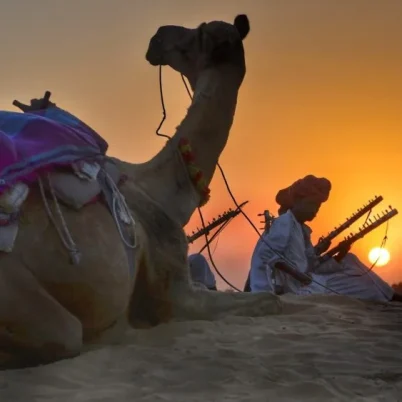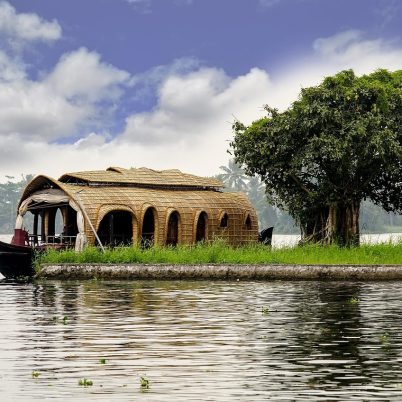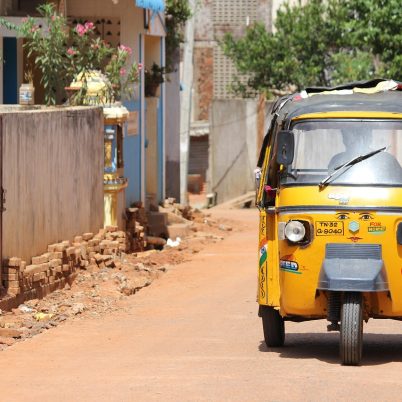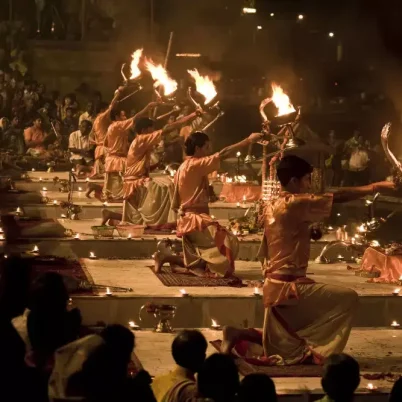
A reliable source of water in the arid regions, stepwells are a marvelous feat of engineering and architecture, and you can find some of the most magnificent stepwells in India. Used as a place of social gathering, the gorgeous stepwells are India’s major contribution to architecture.
Stepwells in India
Known as vav, baolis, and baoris, stepwells are wells or ponds designed with staircases around to have access to the water irrespective of the changing water levels through the seasons. Stepwells originated during the Indus Valley Civilization. While a stepwell was built as a water reservoir, most of them were grand in their construction, where people could swim, bathe, and perform religious rituals and celebrations.
There are thousands of stepwells in India. While most of them are not in use anymore, they still retain water and are treasured pieces of India’s past.
Here are the 10 most famous stepwells in India.
1. Rani ki Vav, Gujarat
One of the oldest, grandest, and biggest stepwells in the world, Rani ki Vav, or the Queen’s Stepwell, is situated on the banks of River Saraswati in Patan, Gujarat. The only UNESCO World Heritage Stepwell in India, the step well was built by Rani Udayamati in 1063 in memory of her husband King Bhimdev.
Rani ki Vav is built in the form of an inverted temple using Maru-Gujarat architectural style. The five-storeyed structure houses more than 800 sculptures engraved on the pillars and walls, of characters from Hindu mythology. It is also believed that there is an escape route on the bottom level of the well that connects to the Sun Temple in Modhera!
The stepwell is extremely well-preserved, and it is actually because the stepwell was flooded by the Sabarmati river and filled with silt in the 13th century. It disappeared from the face of the earth, submerged underwater. It was then rediscovered by the Archaeological Survey of India only in 1980.
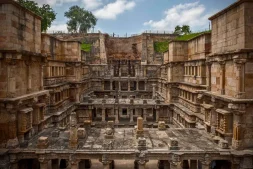 Rani ki Vav, Patan
Rani ki Vav, Patan
2. Chand Baori, Rajasthan
The stepwell of Chand Baori in Rajasthan, has been a part of a few movies, including the Hollywood movie, The Dark Knight Rises. Located in the quaint village of Abhaneri in Rajasthan, this 1000 year old heritage site is one of the deepest stepwells in the world. 13 floors deep with 3500 steps constructed in a perfectly symmetrical way, Chand Baori is truly an architectural wonder. The stepwell was built by King Chanda of Nikhumb dynasty in around 800 CE to 900 CE as a water reservoir and acted as a community gathering place for locals and royals alike. Next to the stepwell is the Harshat Mata temple, the goddess of joy and happiness in the village.
According to legends, the stepwell was built in just one night by a djinn, or a spirit. They also believe that no one ever uses the same steps to descend and then ascend from the well.
 Chand Baori, Abhaneri
Chand Baori, Abhaneri
3. Adalaj Vav, Gujarat
The Adalaj Step Well was commissioned by Queen Rudabai, the wife of Rana Veer Singh, ruler of a small kingdom in Ahmedabad.
Since the kingdom was plagued by droughts, Rana Veer Singh decided to construct the stepwell. However, before the completion of the stepwell, the king died in a battle against Sultan Mahmud Begada. The Sultan fell in love with the widowed queen Rudabai and wished to marry her. The queen agreed, on the condition that he first finish building the stepwell. However, once the work was completed in 1599 AD, the queen committed suicide by jumping into the stepwell.
Adalaj ki Vav is a mixture of Hindu, Islamic, and Jain architecture blending together in harmony. The last level has an octagon-shaped well shaft.
It is said that Sultan Mahmud Begada was so impressed by the architecture of the stepwell that he didn’t want anyone to replicate it, which is why he ordered all the masons involved in its construction to be killed. The tombs of the workers can be found near the stepwell.
Read: Best time to visit Ahmedabad
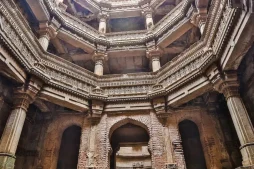 Adalaj Step Well, Adalaj
Adalaj Step Well, Adalaj
4. Pushkarani, Karnataka
The city of Hampi in Karnataka was once the capital of the Vijayanagara Empire, considered to be the second most powerful and richest in the world. Today, the temples and ruins of Hampi are a treat for history lovers all over the world.
Along with all the ruins is another architectural wonder, the Pushkarani tank. Considered to be built around the 15th century by the Chalukya Dynasty, Pushkarani was a sacred tank, built along with the temple of a goddess. The stepwells were also used to host the annual boat festival during the Vijayanagara reign.
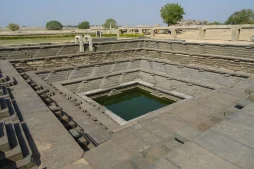 Pushkarani, Hampi
Pushkarani, Hampi
5. Agrasen ki Baoli, Delhi
Agrasen ki Baoli is located, surprisingly, amidst the commercial streets in New Delhi near Connaught Place. The place is featured in a Bollywood movie, PK. Protected by the Archaeological Survey of India, the water reservoir is built with unique rock stones and has more than a hundred steps.
Not much is known about who built the stepwell, but historians believe it was built during the Mahabharata period by Maharaja Agrasen, the king of Agroha. It was then rebuilt in the 14th century by the Agrawal community, descendents of Maharaja Agrasen.
There are a few horror stories associated with the stepwell, and it is rumored to be haunted.
Read: Things to do in Delhi
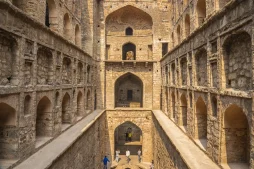 Agrasen ki Baoli, New Delhi
Agrasen ki Baoli, New Delhi
6. Rajon ki Baoli, Delhi
Rajon ki Baoli is nestled in the forests of the Mehrauli Archaeological Zone, often overshadowed by the popular tourist attraction, Qutub Minar. The stepwell was commissioned in 1512 by Daulat Khan Lodi, an important official of Lodi Dynasty in Delhi.
The stepwell gets its name from rajon, meaning the masons, or rajmistris, who built the stepwell. Islamic in architecture, the levels are designed with stucco motifs and niches for lanterns. The site also has a mosque, tombs, and pavilions nearby.
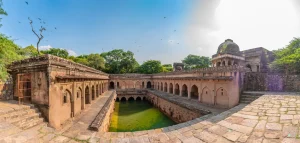 Rajon Ki Baoli, New Delhi
Rajon Ki Baoli, New Delhi
7. Toorji ka Jhalra, Rajasthan
Also known as the Stepwell of Jodhpur, Toor Ji Ka Jhalra was built around 1740 by the queen of Marwar, Gulab Rai, wife of Maharaja Abhay Singh.
The queen was originally from Patan in Gujarat, renowned for one of the most magnificent stepwells, Rani ki Vav. Thus, the queen constructed Toorji ka Jhalra in Jodhpur, taking inspiration from her matriarchal roots. This is one of the very few traditional stepwells in Jodhpur in Rajasthan.
The stepwell is more than 200 feet deep, constructed with red sandstone and carved with various animals and deities. It was submerged under water for more than a century before being restored to its original beauty.
The stepwell also acts as a swimming pool for locals, and even hosted a Red Bull Cliff Diving Competition in 2019.
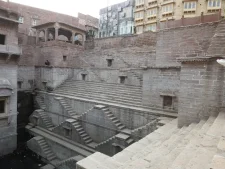 Toorji ka Jhalra, Jodhpur
Toorji ka Jhalra, Jodhpur
8. Surya Kund, Gujarat
The Sun Temple at Modhera in Gujarat is renowned for its brilliant architecture. The temple was built in such a way that during the equinox, the sun rays at dawn shine directly on the idol in the innermost sanctum. A part of the Sun Temple is the Surya Kund, a large stepwell constructed with more than a hundred small shikharas and shrines.
The temple complex was constructed by King Bhimdev I, whose wife, Rani Udayamati, constructed the magnificent Rani ki Vav at Patan.
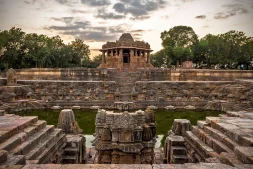 Surya Kund, Modhera
Surya Kund, Modhera
9. Panna Meena ka Kund, Rajasthan
Located near Amer Fort in Rajasthan, Panna Meena Ka Kund made an appearance in the movie “The Best Exotic Marigold Hotel”. There isn’t much information about its origin, but it was believed to be built for the people of Amer to collect water.
The square-shaped stepwell is comparable to Chand Baori in its architecture – there are stairs on all four sides and a room on the northern wall. During the reign of Maharaja Jai Singh in the 16th century, the stepwell was supposedly used for religious ceremonies and festivals.
See also: Things to do in Rajasthan
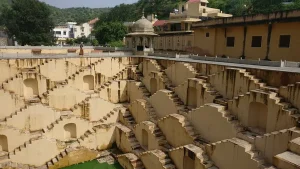 Panna Meena ka Kund, Jaipur
Panna Meena ka Kund, Jaipur
10. Raniji ki Baori, Rajasthan
Similar to Rani ki Vav, Raniji ki Baori also means Queen’s Stepwell. Located in Bundi in Rajasthan, the stepwell was constructed by Queen Nathavati in 1699 AD.
The stepwell has a narrow dateway with four pillars. A flight of stairs leads downstairs into a chamber which is part well, part temple, and part palace.
The desert region of Rajasthan often faced water shortage, which is why you can find many stepwells in this state. There are around 50 tanks for water conservation in Bundi itself, of which 21 have been commissioned by Queen Nathavati.
 Raniji ki Baori, Bundi
Raniji ki Baori, Bundi
Stepwells have been a significant part of India’s history, culture, and architecture, and should definitely be on your travel bucket list. Did any of these stepwells fascinate you? Get in touch with us and let us plan the perfect trip for you, customized according to your requirements!
Frequently Asked Questions
Chand Baori in Rajasthan is the largest stepwell in India, extending 13 floors deep, or 30 meters into the ground.
You will find stepwells across India, but Gujarat and Rajasthan are especially well-known for stepwells.
India has some magnificent stepwells, some of which are Chand Baori and Raniji ki Baori in Rajasthan, Adalaj Stepwell, Rani ki Vav, and Suryakund Stepwell in Gujarat, Rajon ki Baoli and Agrasen ki Baoli in Delhi, and Pushkaranis in Karnataka.
Bundi in Rajasthan is often called the city of stepwells, with around 50 stepwells in the city.
helping you travel your way
Everything you need to know about India is here We have tried writing about everything you may need help with for your trip to India, If you need help in planning a trip to India Get in touch with us to to plan your trip of a life time.



